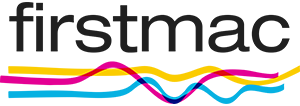
How long is a piece of string? Probably not the most helpful retort to the question, but how much it costs to establish and run an SMSF depends on how much help you want or need, and whether you have an SMSF loan or not.
SMSF should stand for self managed super fees - because SMSFs tend to attract a lot of fees, especially at the start.
Fees boil down to essential and non-essential fees. Establishing an SMSF typically costs around $500. This is because it is a trust and means you’ll need to establish an investment strategy and trust deed, among other documents, as well as apply the fund to the Australian Tax Office (ATO) for an ABN and a TFN.
From there, non-essential fees (i.e. ones you might not need to pay if you want to do everything yourself) include a corporate trustee and financial fee, alongside some others.
For the 2020-21 financial year, ATO data indicates the average annual admin and operating expenses was $6,545 per fund. This sounds high but might not be when you consider other options, or ways to mitigate this cost.
So, let’s break down a few typical expenses.
|
Fee Category |
Typical Cost |
Essential/Non-Essential? |
Brief Description |
|---|---|---|---|
|
Establishment |
$1500< |
Essential |
Includes ASIC fee, accountants/lawyers fees, and setup. |
|
Annual ATO SMSF Supervisory Levy |
$250 |
Essential |
ATO regulates and monitors SMSFs. This is an annual fee. |
|
Annual Audit |
$350 |
Essential |
SMSFs are required to be audited once per financial year to ensure compliance. |
|
Annual admin Fees |
$1,000 |
Essential |
Includes tax returns and financial statements, can also prepare meeting minutes. |
|
Actuarial certificate |
$250 |
Essential |
Only essential in pension phase |
|
Investment Fees |
0.50% |
Essential but controllable |
Shares, managed funds, ETFs and other investments might come with regular fees - these can be highly variable but you can shop around for competitive products. |
|
LRBA Fees |
$800< |
Essential but controllable |
If you don’t have an SMSF loan you can skip this part, but typical LRBA fees are similar to a home loan and are highly dependent on the lender. |
|
Corporate Trustee |
$800 |
Not essential |
If you set your fund up to have a corporate trustee, the fund continues even after a member dies. Can be more difficult to unwind but might provide more asset protections. |
|
Financial Advice |
$2,000< |
Not essential |
If you’re paying a financial planner, this can be costly but might be worth the headache if you’re a ‘hands off’ type of investor. |
Are SMSFs more expensive than regular super funds?
Earlier we mentioned the $6,545 average annual running costs of SMSFs. That sounds like a lot, but if you had a large balance it might work out to be more cost effective than a regular super fund.
ATO data indicates the average fund value in 2020-21 was about $1.47 million. This implies a 0.44% cost to run the SMSF per year, which sounds a lot cheaper. Of course, not everyone has $1.47 million in their fund; the median was $834,514, but you start running into quality control issues when you divide medians with averages.
When comparing with popular low-cost industry funds, some fee breakdowns are as follows:
-
Australian Super: $1 a week and 0.10% p.a. for admin fees, plus up to 0.59% p.a. for investment fees depending on portfolio option.
-
Australian Retirement Trust: $1.20 per week plus 0.10% p.a. plus 0.07% p.a. for admin, plus up to 0.59% p.a. investment fees.
This was correct at the time of writing, and do not include transaction costs. These fees also do not include any insurances such as life or TPD, which are a common feature in retail and industry funds.
So, you’ll have to weigh up the costs of your own current super fees as a proportion of your balance, as well as the cost of any insurances.
When do SMSFs become more cost-effective than regular super funds?
You can’t control your super fund’s performance, but you can control your fees payable. So, when does it become more cost effective to run an SMSF? The balance might not need to be as high as you think.
ASIC’s MoneySmart website used to say $500,000 was the ‘break even’ point of when SMSFs become more cost effective. However it quickly moved away from that yardstick as it was seen as inaccurate.
In 2021 two pieces of research were commissioned by the SMSF Association, one by Rice Warner and the other by Adelaide University. Both found a balance of $200,000 is when SMSFs become cost competitive with super funds. The latter’s was based on 319,000 funds' data from 2017-2019.
To see which option could become more cost effective for you, you’ll have to weigh up your current fund’s fees paid over the past financial year, versus how much you’d pay with a self-managed super fund.
| Lender | Home Loan | Interest Rate | Comparison Rate* | Monthly Repayment | Repayment type | Rate Type | Offset | Redraw | Ongoing Fees | Upfront Fees | Max LVR | Lump Sum Repayment | Additional Repayments | Split Loan Option | Tags | Row Tags | Features | Link | Compare | Promoted Product | Disclosure |
|---|---|---|---|---|---|---|---|---|---|---|---|---|---|---|---|---|---|---|---|---|---|
6.74% p.a. | 6.76% p.a. | $3,240 | Principal & Interest | Variable | $null | $230 | 70% |
| Promoted | Disclosure | |||||||||||
6.99% p.a. | 7.04% p.a. | $3,323 | Principal & Interest | Variable | $0 | $220 | 70% | Disclosure | |||||||||||||
7.00% p.a. | 7.39% p.a. | $3,327 | Principal & Interest | Variable | $0 | $445 | 60% | ||||||||||||||
7.24% p.a. | 7.26% p.a. | $3,407 | Principal & Interest | Variable | $0 | $230 | 80% |
| Promoted | Disclosure |
Photo by Firmbee on Unsplash


